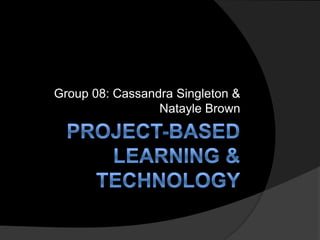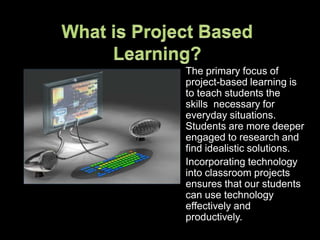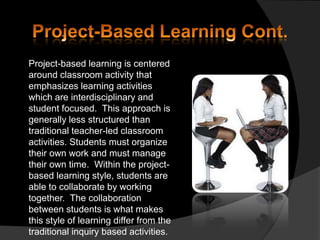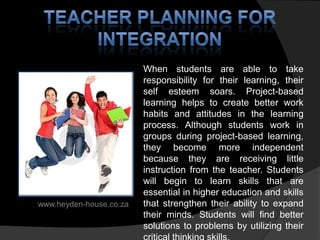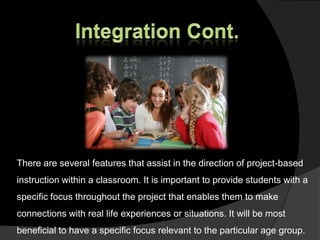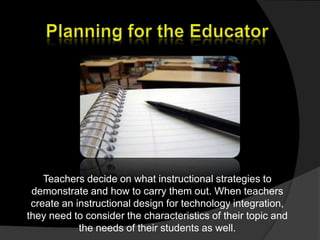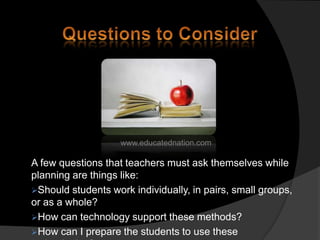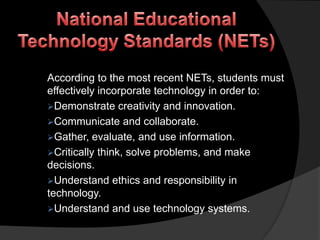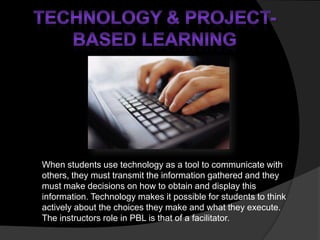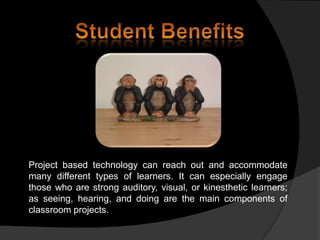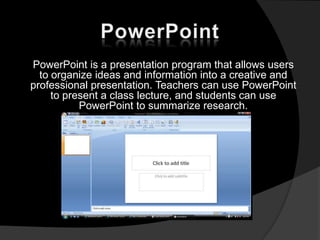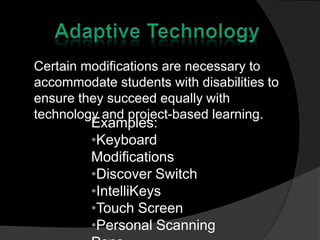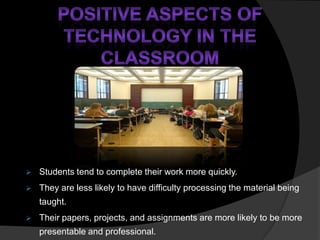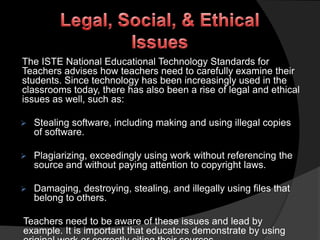Project-based learning is a student-centered approach that emphasizes hands-on, active learning. Students work independently or collaboratively to investigate an authentic problem, question, or challenge and produce a tangible product or presentation. Incorporating technology allows students to effectively use tools like video cameras, presentation software, and podcasts to support their research and presentations. When implementing project-based learning, teachers take on a facilitator role and must consider how technology can support individual, pair, and group work while also preparing students to use technologies appropriately and productively.
